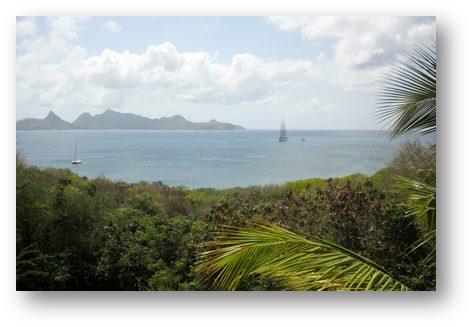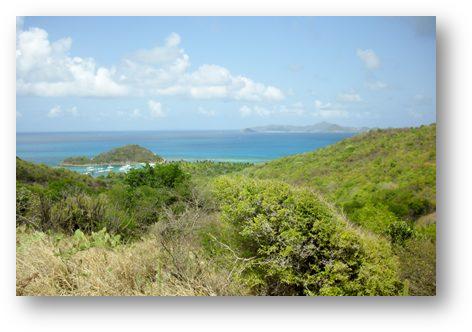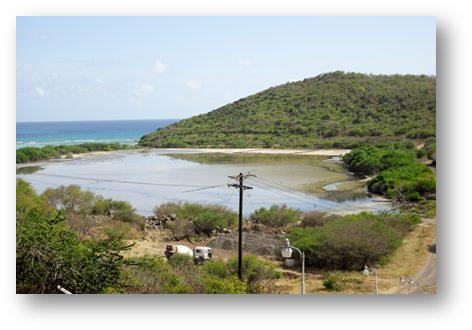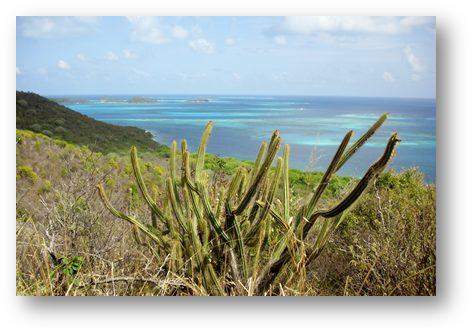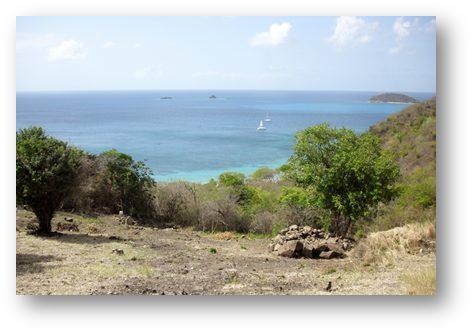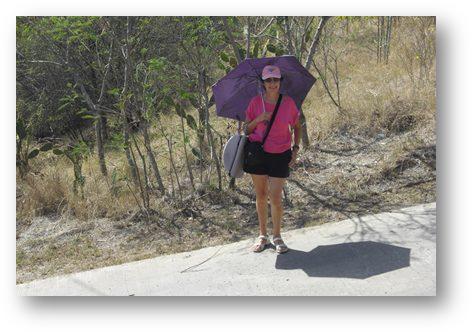Mayreau

Position: 12:38.026N 61:23.901W Date: Monday 4th March 2013 We left Tobago Cays early evening and sailed the short distance to a small island called Mayreau. The first anchorage we tried was at Salt Whistle Bay. It is blessed with some quite fantastic natural features with a half-moon shaped bay, white sand backed by palm trees and shallow water. Unfortunately what nature has provided with one hand, people on charter boats have taken away with the other. There were a lot of catamarans there tied to mooring buoys. I thought I could see a place to anchor and turned to enter the bay. At that time two charter boats (both big cats) were to seaward of me and as they saw me turn it appeared to spark in them some form of primeval flocking instinct combined with a fear of being the last to reach the roost at night. They both turned abruptly a few seconds after me, gunned their engines and went at full power to reach the anchorage before me. Ignoring all common sense, not to mention anti-collision regulations, they both cut sharply in front of me as they proudly claimed the last two mooring buoys available. I didn’t want to use a buoy, and the anchoring spot I could see was still available, but after the exhibition of ignorance both skippers had demonstrated I just didn’t want to share an anchorage with them. So we left Salt Whistle Bay and sailed a mile further down the island to the main anchorage of Saline Bay. After we had anchored we appreciated the name. Just out of sight behind the palm trees lining the beach is a shallow salt pond, still used by some islanders to extract salt. But like a lot of salt ponds they do produce a rather unpleasant whiff. Mayreau is another small island which claims to be the smallest of the inhabited islands in The Grenadines. The inhabitants are charming, polite and respectful, not at all pushy like so many of the people we have met in many of the other islands. One hill, only about 200 feet high dominates the island and it is along the steep windy road to the top of this hill that the village lies. That first night we stayed on board, had a swim, cooked a meal, and had an early night. My first job in the morning was to investigate the leak from the hot water cylinder. This is situated in the engine compartment and when, yesterday, I had found that we had a leak the engine had been far too hot for me to be able to get near to the tank to try to fix the problem. The only thing I could do at the time was to turn off the pressurised water system. This meant that we retained what was left of our water supply but had to use a foot pump to get any fresh water, not very convenient. The hot water cylinder was leaking from somewhere within its core, and on closer inspection I could see that an important rubber seal, around the heating element had been badly fitted. This was bad enough but I was surprised to find that the manufacturers of the boat, Hallberg Rassy, had not even fitted a simple stopcock to allow me to isolate the tank. Not very impressive. Fortunately I had purchased a few spare plumbing parts whilst we were in The Canaries, and I was able to fit one and stop any more water from entering the tank. We now had a pressurised water system again, but no more hot water. This we can live with. Late in the morning we took the dinghy ashore to have a look at the island. It was all very pleasant with some great views across the bay back towards Union Island.
The bar pictured below, suffering from a somewhat ecelectic design style, was called ‘Robert Righteous & de Youths’ after its eponymous owner, a local Rastafarian.
We stopped half way up the hill for a spot of lunch and a chance to catch up on emails. Eileen stayed behing whilst I strolled the rest of the way up the hill to catch the views. I was well rewarded. At the very top there were a couple of churches with one of them, the Catholic one, clearly having done a better deal with Big G, for it had the most stunning views back over towards the Tobago Cays, where we had been just recently.
We then wound our way back down the hill to spend our second night in the anchorage.
I had rigged a bright light in the cockpit to allow us to see our food when we eat there at night. This usually attracts quite a shoal of small fish such as ballyhoo and other ‘bait’ fish. Whilst we were eating I noticed a quite large bright shape just under the surface of the water near to the boat. We took a closer look and could see several large fish swimming around the boat, all between 4 and 6 feet long. We were only in about 5 metres of water, but we surmised that the larger fish were feeding on the smaller fish. They were torpedo shaped, with a couple of dorsal fins and tails rather like a salmon; they had dark greenish backs, but when they turned their sides reflected every scrap of available light so that they shone with the brilliance of silver foil. I shone a torch light into the water and as the beam caught their eyes they reflected the light back like light cats eyes, but with a bright orange gleam. What were these fish? I couldn’t identify them, but they stayed with us for at least 3 hours, until we went to bed. |
